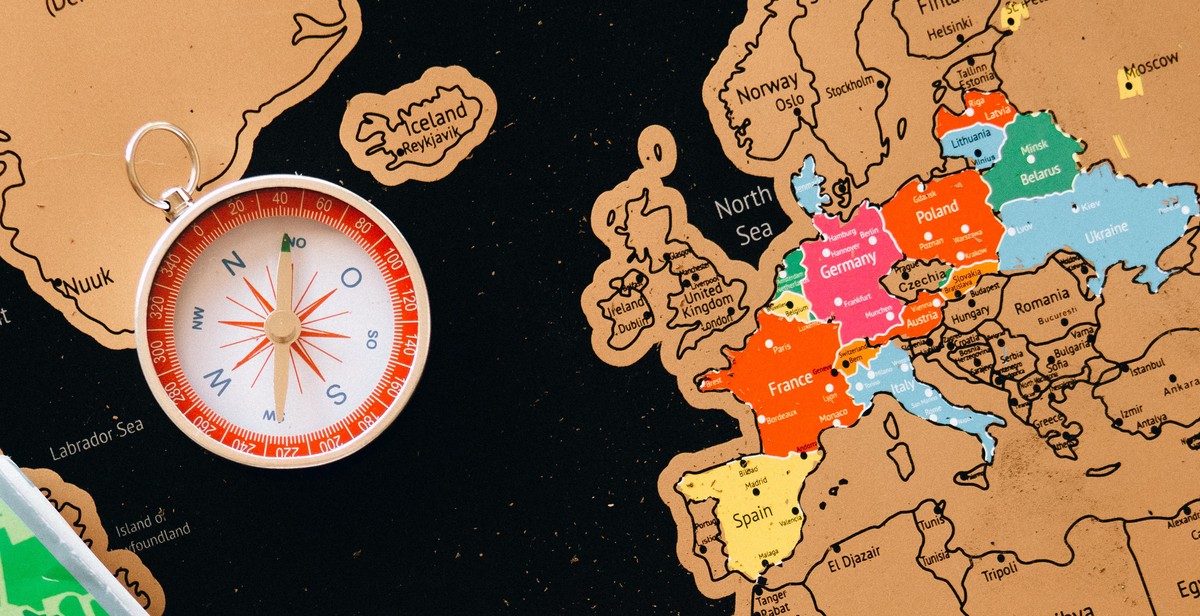How to Choose the Right Central American Destination: Factors to Consider for Travelers
Central America is a region that is rich in culture, history, and natural beauty. It is made up of seven countries, each with its own unique attractions and experiences to offer. From the ancient ruins of the Mayans to the pristine beaches of Costa Rica, Central America has something for everyone.
However, with so many options to choose from, it can be overwhelming to decide which destination to visit. This is where careful planning and consideration come into play. In this article, we will explore the factors that travelers should consider when choosing a Central American destination.
Why Central America?
Central America is a destination that is often overlooked by travelers, but it has so much to offer. With its tropical climate, stunning beaches, lush rainforests, and vibrant culture, Central America is a region that is sure to leave a lasting impression on anyone who visits.
One of the main draws of Central America is its affordability. Compared to other popular destinations, such as Europe or Asia, Central America offers travelers a chance to experience new cultures and adventures without breaking the bank.
Whether you are an adventure seeker, a history buff, or a beach bum, Central America has something for everyone. So, let’s dive into the factors that you should consider when choosing the right Central American destination for your next trip.
Factors to Consider for Choosing the Right Central American Destination
Central America is a beautiful region that offers a variety of destinations for travelers to explore. However, choosing the right destination can be overwhelming, especially if you are new to the region. Here are some of the factors to consider when choosing the right Central American destination:
Budget
Your budget will play a significant role in determining the Central American destination you choose. Some destinations are more expensive than others. For example, Costa Rica is generally more expensive than Nicaragua. However, keep in mind that some destinations may offer more value for your money, so research the cost of living, accommodations, and activities before making your decision.
Time of Year
The time of year you plan to travel will also affect your destination choice. Some destinations have a rainy season, which may limit the activities you can do. For example, if you want to go surfing, you may want to avoid the rainy season in El Salvador. On the other hand, some destinations have peak tourist seasons, which means higher prices and more crowds. Research the weather patterns and tourist seasons before making your decision.
Type of Experience
Central America has a variety of experiences to offer, from adventure to relaxation. Determine what type of experience you are looking for and choose a destination that aligns with your interests. For example, if you want to explore Mayan ruins, Guatemala and Belize are great options. If you want to surf or go on a yoga retreat, Costa Rica is a popular destination.
Safety and Security
Safety and security should be a top priority when choosing a Central American destination. Research the safety of the destination you are considering, including crime rates and political stability. Some destinations may require extra precautions, such as avoiding certain areas or traveling with a guide. Always prioritize your safety when traveling.
Language and Culture
Central America has a rich culture and diverse languages. If you are interested in immersing yourself in a particular culture or learning a new language, choose a destination that aligns with your goals. For example, if you want to practice your Spanish, Guatemala or Nicaragua may be great options.
Accessibility
Finally, consider the accessibility of the destination. Some destinations may be more difficult to reach than others, which may affect your travel time and budget. Research the transportation options and costs before making your decision.
Conclusion
By taking these factors into consideration, you can choose the right Central American destination that aligns with your goals, interests, and budget. Whether you are looking for adventure, relaxation, or cultural immersion, Central America has something to offer for every traveler.

Budget
One of the most important factors to consider when choosing a Central American destination is your budget. Here are some tips on how to save money on accommodation, transportation, and activities:
Accommodation
Accommodation can take up a big portion of your travel budget, but there are ways to save money without sacrificing comfort. Here are some options:
- Hostels – Hostels are a great option for budget travelers. They offer dormitory-style rooms for a fraction of the cost of a hotel room. Some hostels also offer private rooms for a slightly higher price.
- Airbnb – Airbnb is a popular option for travelers who want the comfort of a home away from home. You can rent a room or an entire apartment for a lower price than a hotel room.
- Camping – If you enjoy the outdoors, camping is a great way to save money on accommodation. Many national parks in Central America offer campgrounds for a small fee.
Transportation
Transportation can also be a significant expense when traveling in Central America. Here are some tips on how to save money on transportation:
- Public Transportation – Public transportation in Central America is usually very affordable. Buses and trains are the most common modes of transportation, and they are generally safe and reliable.
- Shared Shuttles – Shared shuttles are a popular option for travelers who want to save money on transportation. These shuttles are usually shared with other travelers and are cheaper than private transportation.
- Rent a Car – If you want more flexibility in your travel plans, renting a car can be a good option. However, it can be more expensive than other modes of transportation.
Activities
There are plenty of free and low-cost activities to do in Central America. Here are some ideas:
- Beaches – Central America is known for its beautiful beaches, and many of them are free to access. Pack a picnic and spend the day relaxing in the sun.
- Hiking – Many national parks in Central America offer hiking trails for free or for a small fee. Take advantage of the beautiful scenery and get some exercise at the same time.
- Local Markets – Visiting local markets is a great way to experience the culture and try new foods. You can also find souvenirs for a lower price than in tourist shops.
| Accommodation | Transportation | Activities |
|---|---|---|
| Hostels | Public Transportation | Beaches |
| Airbnb | Shared Shuttles | Hiking |
| Camping | Rent a Car | Local Markets |
Time of Year: Factors to Consider for Travelers
When planning a trip to Central America, it’s important to consider the time of year you’ll be traveling. The climate, peak season, and low season can all have a significant impact on your trip. Here are some factors to keep in mind:
Climate
The climate in Central America varies depending on the country and the time of year. Generally, the region has a tropical climate with two seasons: a wet season and a dry season. The wet season typically runs from May to November, while the dry season runs from December to April.
If you’re looking for sunny, dry weather, the dry season is the best time to visit. However, keep in mind that this is also peak tourist season, so prices may be higher and crowds may be larger. If you don’t mind a little rain and want to save some money, consider traveling during the wet season. Just be prepared for occasional downpours and increased humidity.
Peak Season
The peak tourist season in Central America varies depending on the country, but generally runs from December to April. This is when the weather is at its best and many people are looking to escape the cold winter months in North America and Europe.
If you’re planning to travel during peak season, be prepared for higher prices and larger crowds. It’s a good idea to book your accommodations and activities in advance to ensure availability. Keep in mind that popular destinations like Costa Rica and Panama can get very crowded during this time, so if you’re looking for a more relaxed trip, you may want to consider less popular destinations or traveling during the low season.
Low Season
The low season in Central America runs from May to November, during the wet season. This is when you’re likely to find the best deals on accommodations and activities, as prices are generally lower and there are fewer tourists.
However, keep in mind that the weather can be unpredictable during the low season, with occasional downpours and increased humidity. Some attractions and activities may also be closed or have limited hours. If you’re willing to take a chance on the weather and don’t mind a little rain, the low season can be a great time to visit Central America.
| Factor | Dry Season | Wet Season |
|---|---|---|
| Climate | Sunny and dry | Ocassional downpours and increased humidity |
| Peak Season | December to April | N/A |
| Low Season | N/A | May to November |

Type of Experience
When it comes to choosing a Central American destination, the type of experience you’re looking for is crucial in making the right decision. Whether you’re looking for a beach vacation, adventure travel, or cultural immersion, each type of experience offers unique opportunities and considerations.
Beach Vacation
Central America is home to some of the most beautiful beaches in the world, making it an ideal destination for those looking for a relaxing beach vacation. Countries like Costa Rica, Nicaragua, and Panama offer a variety of beach options, from secluded coves to bustling resort towns.
- Consider the time of year: Some beaches in Central America can be crowded during peak tourist season. If you’re looking for a quieter experience, consider visiting during the off-season.
- Research the area: Some beaches are known for their nightlife and party atmosphere, while others are more family-friendly. Make sure you research the area to find the best fit for your preferences.
- Check for safety: Some beaches may have strong currents or other safety concerns. Make sure to research the beach’s safety record before booking your trip.
Adventure Travel
Central America is also a great destination for adventure travel, with options like hiking, rafting, and zip-lining. Countries like Costa Rica and Belize offer a range of outdoor activities for the more adventurous traveler.
- Consider your fitness level: Some adventure activities require a certain level of fitness. Make sure to research the requirements before booking your trip.
- Check for age restrictions: Some activities may have age restrictions, so make sure to check ahead of time if you’re traveling with children.
- Research the guides: Make sure to choose a reputable tour company with experienced guides to ensure your safety during your adventure.
Cultural Immersion
For those looking to immerse themselves in the local culture, Central America offers a wealth of opportunities. From traditional markets to ancient ruins, countries like Guatemala and Honduras offer a rich cultural experience.
- Research the local customs: Make sure to research the local customs and etiquette before your trip to avoid any cultural faux pas.
- Learn the language: Knowing some basic Spanish can go a long way in connecting with the locals and enhancing your cultural experience.
- Be respectful: Remember to be respectful of the local culture and traditions, and always ask for permission before taking photos or entering sacred sites.
| Type of Experience | Pros | Cons |
|---|---|---|
| Beach Vacation | Relaxing, beautiful scenery, variety of options | Crowded during peak season, safety concerns |
| Adventure Travel | Exciting, adrenaline-inducing, unique experiences | Requires certain level of fitness, age restrictions |
| Cultural Immersion | Rich cultural experience, opportunity to connect with locals | Language barrier, potential for cultural misunderstandings |

Safety and Security
As a traveler, your safety and security should always be a top priority when choosing a Central American destination. While some countries in the region have high crime rates, others are considered safe for tourists. Here are some factors to consider:
Crime Rates
Central America has a reputation for high crime rates, especially in urban areas. However, crime rates vary widely between countries and even within cities. Before choosing a destination, research the crime rates and types of crimes that are most common in the area. It’s also a good idea to learn about the safety measures that locals and other travelers take to protect themselves.
For example, Costa Rica is considered one of the safest countries in the region, with low rates of violent crime. On the other hand, Honduras has one of the highest murder rates in the world. However, this doesn’t mean that you should avoid Honduras altogether. By taking certain precautions and avoiding high-risk areas, you can still enjoy a safe and enjoyable trip.
Tourist-Friendly Areas
Some areas in Central America are more tourist-friendly than others. These areas typically have higher levels of security and a greater police presence. Tourist-friendly areas also tend to have more amenities and services that cater to travelers, such as hotels, restaurants, and tour operators.
For example, in Belize, the popular tourist destination of Ambergris Caye has a low crime rate and is considered safe for travelers. Similarly, in Nicaragua, the colonial city of Granada is a popular destination for tourists and has a lower crime rate than other parts of the country.
Travel Advisories
Before traveling to Central America, it’s important to check the travel advisories issued by your government or other reputable sources. These advisories provide up-to-date information on the safety and security situation in the region and may recommend certain precautions or areas to avoid.
For example, the US State Department issues travel advisories for all countries in Central America, ranging from Level 1 (exercise normal precautions) to Level 4 (do not travel). It’s important to take these advisories seriously and to plan your trip accordingly.
| Factor | Considerations |
|---|---|
| Crime Rates | Research crime rates and types of crimes in the area |
| Tourist-Friendly Areas | Look for areas with higher security, police presence, and tourist amenities |
| Travel Advisories | Check government and reputable sources for up-to-date safety and security information |

Language and Culture in Central America
Central America is a diverse region with a rich cultural heritage. Spanish is the official language in most countries, except for Belize, where English is the official language, and in some areas of Guatemala, where indigenous languages are still spoken. Spanish is a beautiful language that opens doors to communicate with locals and understand their culture better.
Spanish-Speaking Countries
For travelers who want to practice their Spanish skills, Central America is an ideal destination. Spanish is the second most spoken language in the world, and it has a unique dialect in each country. For example, Nicaragua has a reputation for having a slow and clear accent, making it an excellent place to learn Spanish. In contrast, Costa Ricans use a lot of slang and idioms, making it a more challenging but rewarding place to practice your Spanish skills.
Indigenous Communities
Central America is also home to many indigenous communities that have preserved their traditions, languages, and customs. These communities offer a unique and authentic cultural experience for travelers interested in learning about their way of life. In Guatemala, for instance, there are over 20 different indigenous groups, each with its own language, clothing, and customs. In Costa Rica, the Bribri and Cabécar communities live in remote areas and offer a glimpse into their traditional way of life.
Cultural Festivals
Central America is famous for its vibrant and colorful cultural festivals. These festivals celebrate everything from religious events to historical figures and cultural traditions. The most famous festival in Central America is the Day of the Dead, celebrated in Mexico and Guatemala, where families honor their loved ones who have passed away. Other popular festivals include the Carnaval in Panama and Nicaragua, the Independence Day celebrations in each country, and the Garifuna Settlement Day in Belize.
| Country | Language | Indigenous Communities | Cultural Festivals |
|---|---|---|---|
| Guatemala | Spanish | Over 20 different groups | Day of the Dead, Independence Day |
| Honduras | Spanish | Lenca, Maya, Garifuna | Garifuna Settlement Day, Independence Day |
| El Salvador | Spanish | Nahua, Maya, Pipil | Day of the Dead, Independence Day |
| Nicaragua | Spanish | Miskito, Rama, Garifuna | Carnaval, Independence Day |
| Costa Rica | Spanish | Bribri, Cabécar, Boruca | Day of the Dead, Independence Day |
| Panama | Spanish | Ngäbe-Buglé, Emberá, Wounaan | Carnaval, Independence Day |
| Belize | English | Maya, Garifuna, Creole | Garifuna Settlement Day, Independence Day |

Accessibility
When it comes to choosing a Central American destination, accessibility is a crucial factor to consider. In this section, we will discuss the accessibility of the region in terms of international flights and regional transportation.
International Flights
Central America is well-connected to major cities around the world, with several international airports serving the region. The most popular airports include:
- Tocumen International Airport (PTY) in Panama City, Panama
- Juan Santamaria International Airport (SJO) in San Jose, Costa Rica
- Aeropuerto Internacional de El Salvador (SAL) in San Salvador, El Salvador
- Aeropuerto Internacional La Aurora (GUA) in Guatemala City, Guatemala
These airports are served by major airlines such as American Airlines, Delta, United, and Copa Airlines, among others. The availability of direct flights from your location will depend on your departure city and airline preferences.
Flight Costs
The cost of international flights to Central America can vary depending on your departure city, travel dates, and airline choice. It is advisable to compare prices across different airlines and booking platforms to find the best deal. Traveling during the low season (May to November) can also result in lower airfares.
Regional Transportation
Once you arrive in Central America, getting around the region can be done through various modes of transportation, including:
- Bus: Buses are a cheap and popular way to travel between countries in Central America. Several bus companies operate in the region, offering both local and long-distance services.
- Taxis: Taxis are a convenient option for short trips within a city or town. It is advisable to negotiate the fare before getting into the taxi to avoid being overcharged.
- Car rental: Renting a car is a great option for travelers who want to explore the region at their own pace. Several international car rental companies operate in Central America, but it is advisable to book in advance to ensure availability.
- Domestic Flights: For longer distances, domestic flights are available in some countries, including Costa Rica and Panama. These flights are typically operated by smaller airlines and can be more expensive than other modes of transportation.
Transportation Costs
The cost of transportation in Central America can vary depending on the mode of transportation and the distance traveled. Bus fares are generally the cheapest option, while car rentals and domestic flights can be more expensive. It is advisable to research transportation costs in advance and budget accordingly.
| Accessibility Factor | Summary |
|---|---|
| International Flights | Central America is well-connected to major cities around the world, with several international airports serving the region. |
| Regional Transportation | Various modes of transportation are available in Central America, including buses, taxis, car rentals, and domestic flights. |

Conclusion
Choosing the right Central American destination can be a daunting task, but it doesn’t have to be. By taking into consideration factors such as personal preferences and thorough research, travelers can make informed decisions that will lead to unforgettable experiences.
Personal Preferences
When choosing a Central American destination, it’s important to consider personal preferences. Are you looking for a relaxing beach vacation or an adventurous jungle trek? Do you prefer a bustling city or a quiet town? By identifying your preferences, you can narrow down your options and choose a destination that suits your needs.
Research
Thorough research is essential when choosing a Central American destination. Consider factors such as safety, climate, and local customs. Look for reviews and recommendations from other travelers, and consult with travel experts to get a better understanding of your options.
| Factors to Consider | Examples |
|---|---|
| Climate | Costa Rica has a tropical climate with year-round sunshine, while Guatemala has a more temperate climate with distinct seasons. |
| Safety | Nicaragua has experienced political unrest in recent years, while Panama is considered one of the safest countries in Central America. |
| Local Customs | In Belize, it’s considered rude to point with your finger, while in El Salvador, it’s customary to greet people with a kiss on the cheek. |
Ultimately, the right Central American destination for you will depend on your personal preferences and the amount of research you’re willing to do. By taking the time to consider these factors, you can choose a destination that will provide an unforgettable travel experience.
